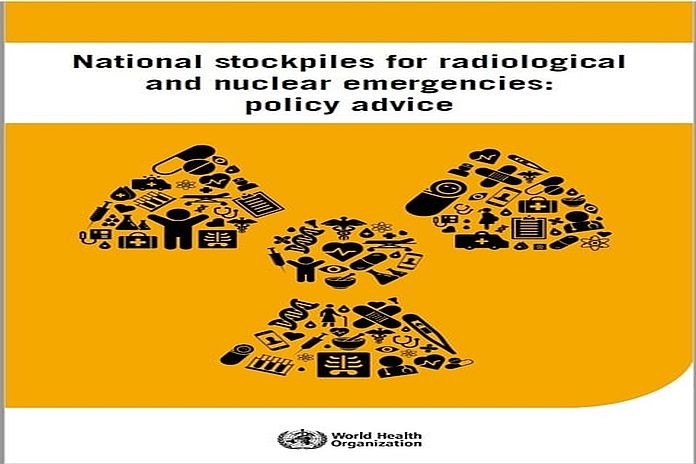GENEVA, Switzerland – The World Health Organization (WHO) on Friday updated its list of medicines that should be stockpiled for radiological and nuclear emergencies, along with policy advice for their appropriate management. These stockpiles include medicines that either prevent or reduce exposure to radiation, or treat injuries once exposure has occurred.
“In radiation emergencies, people may be exposed to radiation at doses ranging from negligible to life-threatening. Governments need to make treatments available for those in need – fast,” said Dr Maria Neira, WHO acting assistant director-general a.i, Healthier Populations Division. “It is essential that governments are prepared to protect the health of populations and respond immediately to emergencies. This includes having ready supplies of lifesaving medicines that will reduce risks and treat injuries from radiation.”
Key highlights:
- This publication supersedes the 2007 WHO report on the development of national stockpiles for radiation emergencies. It includes updated information on the stockpile formulary based on the developments in radiation emergency medicine in the last decade.
- It provides policy advice for acquisition of drugs which can prevent or reduce radionuclides uptake or increase elimination of radionuclides from the human body.
- It looks at the main elements required for developing, maintaining and managing the national stockpiles of specific medical supplies which will be required for radiological and nuclear emergencies.
- The report looks at the role of national health authorities in stockpile development as well as the role of WHO. As the leading international organization in public health with both the authority and responsibility to assist in health emergencies, WHO provides advice and guidance to countries on public health preparedness and response to radiation emergencies, including stockpile development. In health emergencies WHO may assist in procuring or sharing medical supplies among countries.
- This report includes a brief review of selected emerging technologies and drug formulations, including potential repurposing of products previously approved for other indications.
- Finally, the publication provides examples of practices in establishing and managing a national stockpile in selected countries, namely Argentina, Brazil, France, Germany, Japan, Republic of Korea, Russian Federation and USA.
“This updated critical medicines list will be a vital preparedness and readiness tool for our partners to identify, procure, stockpile and deliver effective countermeasures in a timely fashion to those at risk or exposed in these events,” said Dr Mike Ryan, executive director of WHO’s Health Emergencies Programme.
Typically, a national stockpile for all-hazards health emergencies would include generic supplies and materials used for any type of emergencies, such as personal protective equipment (PPE), trauma kits, fluids, antibiotics and painkillers. This publication includes only specific drugs which are known and licensed today to prevent or treat human over-exposure to radiation.
Radiological and nuclear emergencies may result in exposure to radiation doses high enough to lead to severe health consequences or even death. It is therefore extremely important that governments respond rapidly to such threats. Many countries, however, still lack the essential elements of preparedness for radiation emergencies, according to annual reporting to the WHO Secretariat.
Potential scenarios considered in the publication include radiological or nuclear emergencies at nuclear power plants, medical or research facilities, or accidents during transport of radioactive materials, as well as intentional uses of radioactive materials with malicious intent.
Components of a pharmaceutical stockpile for radiation emergencies
This publication focuses on pharmaceuticals for treating radiation exposure and addresses the governance and management of such a stockpile. A typical radiation emergency stockpile will include the following medicines:
- Stable iodine, administered to prevent or reduce the exposure of the thyroid to radioactive iodine;
- Chelating sand decorporating agents (Prussian blue, applied to remove radioactive caesium from the body and calcium- / zinc-DTPA used to treat internal contamination with transuranium radionuclides);
- Cytokines used for mitigation of damage to the bone marrow, in case of acute radiation syndrome (ARS); and
- Other medicines used to treat vomiting, diarrhoea and infections.
Emerging treatments and countermeasures also discussed in the report give insight to the future medical countermeasures that could be used for managing patients overexposed to radiation. In particular, studies identifying new cellular and molecular pathways and means of administrating drugs may be exploited for novel treatments and new products for use during a radiation emergency.
Emergency preparedness, response and recovery saves lives
Coordination of local, national and international responses is essential for a harmonized response to radiation emergencies. As the agency responsible for guiding healthcare interventions globally, WHO provides advice and ensures access to medicines and health services for countries that are developing national capacity for preparedness and response to radiation emergencies.





